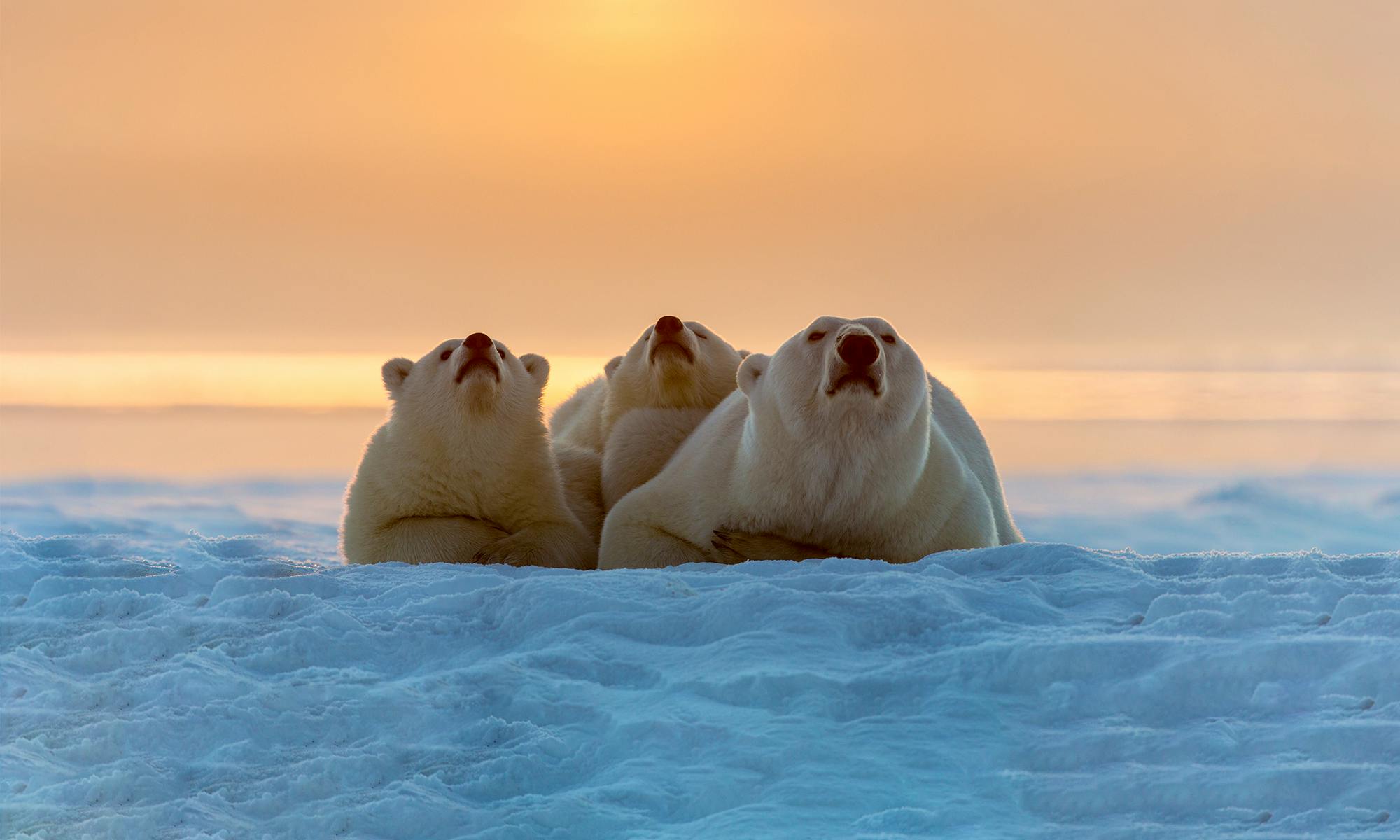The Bureau of Land Management (BLM) in August opened up the coastal plain of Arctic National Wildlife Refuge to the highest bidder, putting the already federally threatened polar bear at unprecedented risk of survival.
With that announcement, BLM made its decision to approve a leasing program to drill for oil and gas in the heart of polar bear habitat. Of the coastal plain of Arctic refuge, 77% is designated critical habitat for the polar bear, containing the most important terrestrial denning habitat for polar bears anywhere in the United States.
Pushed to the edge of extinction by climate change, habitat loss and development, the polar bear is federally listed as a threatened species under the Endangered Species Act. The Southern Beaufort Sea population of polar bears found in northern Alaska has perhaps fewer than 900 bears. This population is one of the most imperiled on the planet and has declined dramatically––about 50% from the 1980s until 2010 and potentially more since then.
Mother bears are increasingly building dens and giving birth onshore as annual sea ice melts with climate change, and scientists estimate that the majority of all Southern Beaufort Sea polar bear maternal dens are now found on land. The survival of every polar bear cub is crucial to the existence of this vulnerable population, and the refuge’s coastal plain is vital to their reproductive success.
Despite these worrying facts, BLM published its Record of Decision to approve the Coastal Plain Oil and Gas Leasing Program in Arctic National Wildlife Refuge in mid-August. The move to allow oil and gas development in this important polar bear habitat led to significant backlash, garnering negative media attention and strong criticism from Defenders, other environmental organizations, tribes, 15 U.S. states and Americans across the country. Considering the overwhelming opposition to drilling in the Arctic Refuge, this outcry comes as no surprise.
The responses have been strong and inspiring: lawsuits to challenge the decision, calls to action and legislation to protect polar bears from the oil and gas activities.
Notably, Rep. Jared Huffman recently introduced the Polar Bear Cub Survival Act of 2020 in Congress to protect polar bear cubs from the destructive leasing program. Once enacted, the Polar Bear Cub Survival Act would prohibit any oil and gas activities from occurring within one mile of polar bear maternal denning habitat in the coastal plain.
Creating a one-mile buffer around denning habitat is vital to maintaining the reproductive success of the imperiled Southern Beaufort Sea polar bear population. Polar bear dens are very hard to spot because an expecting mother will build a den with only enough room for small movements by excavating a “snow cave” and waiting for snow to close the entrance. Newborn cubs are only about 13 inches long and weigh about one pound. Newborns are completely dependent on their mother for nutrition and warmth and far too fragile for significant disruptions.
Oil and gas activities could destroy those dens, crushing cubs or causing mothers to abandon dens, leaving their cubs to perish. Even the most protective scenarios cannot eliminate the risk of disturbing dens, leading to cub mortality. To make matters worse, the best available technology to identify dens still misses 55% of polar bear dens.
The Polar Bear Cub Survival Act takes a clear, effective and science-driven approach to safeguarding this imperiled polar bear population from proposed oil activities in the Arctic National Wildlife Refuge. The one-mile buffer builds on existing regulation by the U.S. Fish and Wildlife Service in the Beaufort Sea and is widely accepted as necessary to protect dens. Since technology is unable to identify dens, the only responsible answer is to avoid developing all suitable denning habitat.
The Arctic National Wildlife Refuge is home to iconic vulnerable species, breathtaking landscapes and indigenous peoples who have depended on the refuge’s resources for thousands of years. For the Gwich’in people, the coastal plain is sacred. We must protect the refuge for future generations to appreciate the wonders of the Arctic. Defenders is doing all it can to protect the Arctic National Wildlife Refuge and its important polar bear habitat. We have joined partner groups and are litigating the administration’s Record of Decision, as well as participating in and leading campaigns to preserve the refuge and protect polar bears. Defenders is also supporting the Polar Bear Cub Survival Act, which would add a crucial layer of protection for polar bears and their terrestrial habitat.
We need your help to defend polar bear cubs, defend habitat in the Arctic refuge and protect the Southern Beaufort Sea population of polar bears from oil and gas drilling. Take action and tell your Member of Congress to support the Polar Bear Cub Survival Act of 2020.











